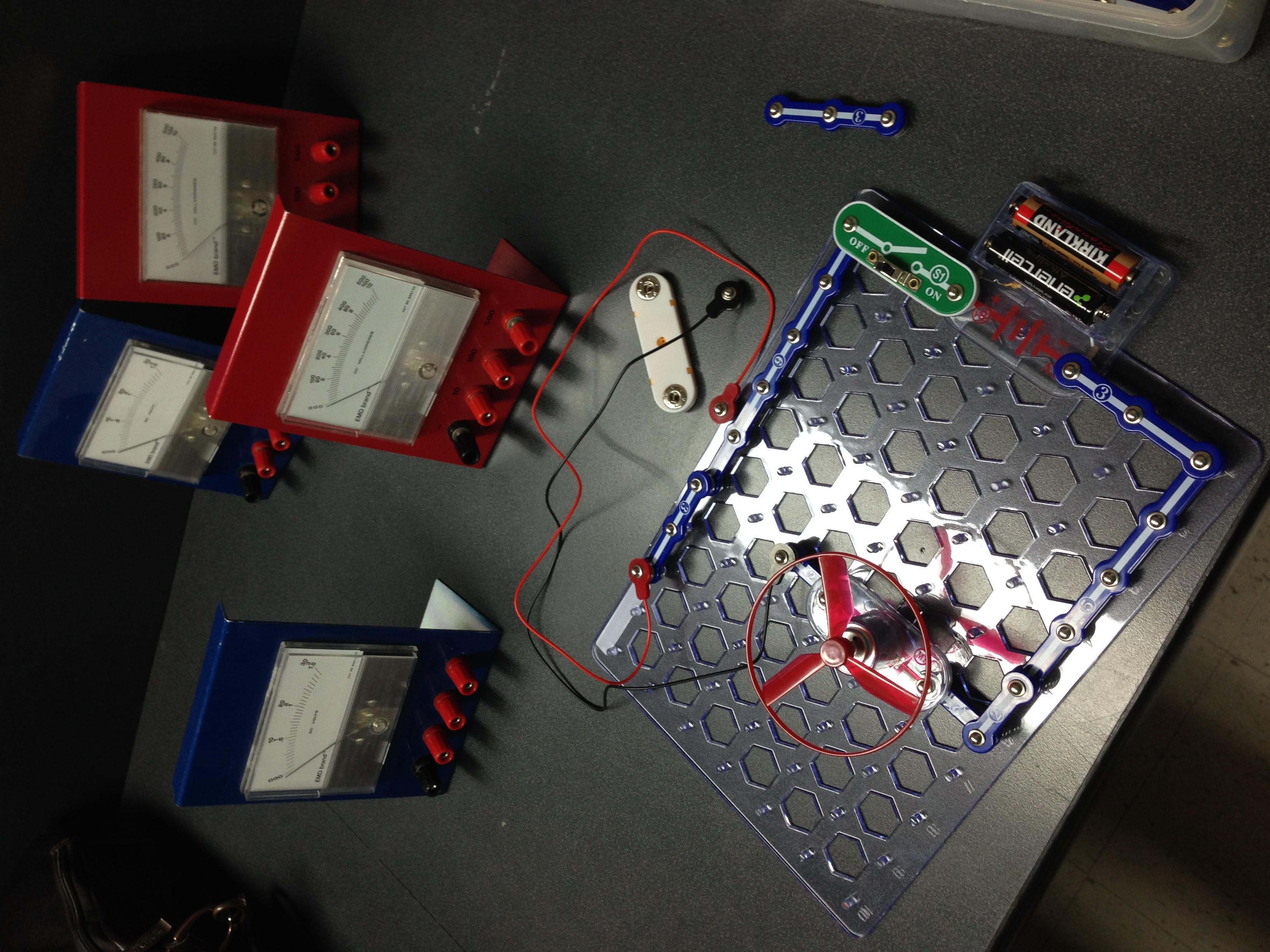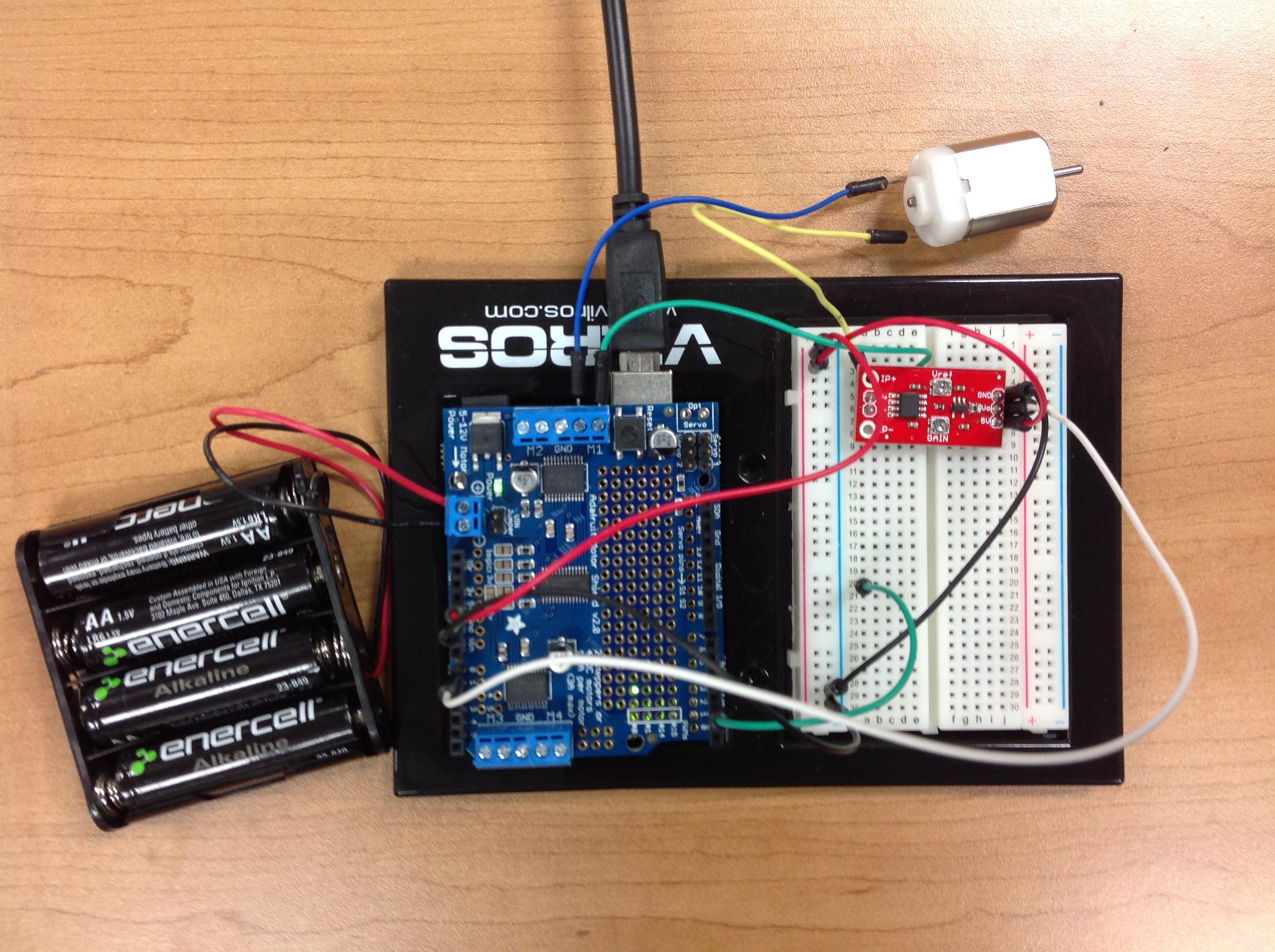Applied Dynamics Lab
Prasad Akavoor and Yancey Quiñones
Energy Consumption Rate in a Robot/Motor
In a circuit where a motor is connected to a battery of voltage V and draws a certain current I, the power consumed is the product V•I. The motor draws the least amount of current when there is no mechanical load. This is because the motor runs the fastest without the load and therefore a significant amount of back emf builds up, and this back emf sends a current opposing the current supplied by the battery, reducing the total current going through the motor. When a mechanical load is added to the motor or when the motor is forced to slow down by a mechanical force, then the back emf is smaller and therefore the circuit draws more current. Our objective in this research is to investigate energy consumed by a robot’s motors. As a first step, we examined a DC motor connected to a battery and an analog ammeter. Yancey brought in a circuit kit, and we quickly built a simple circuit with a DC motor and ammeter. We measured a current of 100 mA through the motor when there was no load, 250 mA with a load (propeller), and 360 mA when the motor was stalled by finger.
As a next step, we decided to continually monitor the current through a DC motor connected to a power supply. We used a motor together with an Arduino microcontroller and an Adafruit Motor Shield v2.0 (Part # 1438). Instructions on how to download libraries including example programs can be found here: https://learn.adafruit.com/adafruit-motor-shield-v2-for-arduino.
We successfully built the following circuit and measured the current through the DC motor. Initially, we did see some clear difference between current without load and current with the motor stalled. Our problem is that the current measurements are inconsistent. Also, even when the motor and the current sensor are disconnected, the program is writing out some “current values” (~350). We don’t understand what the source of this background signal is. Here are some highlights though.
- We programmed the DC motor to go forward and backward, and we measured the current in each direction.
- Current values for forward rotation of the motor are significantly different from those for backward rotation.
- Stopping the motor doesn’t increase the value of the current.
- Current values for backward rotation seem much more erratic.
- Double checked with analog meters: current for forward motion is ~150 mA and for backward motion ~300 mA.

